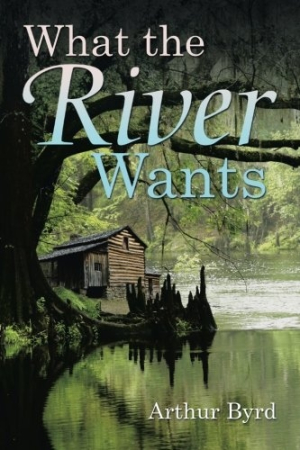What the River Wants
Exploring the notion of home and the importance of family, What the River Wants is a must-read southern tale.
What the River Wants by Arthur Byrd is an engrossing tale of the transformative power of family and friendship.
Tasked with creating a comprehensive family tree for a school genealogy project, protagonist Lee finds himself on a bus to rural Mississippi in order to gain more information from his estranged grandfather, Tom.
Neither he nor his mother, Glenna, are sure why Tom retreated to the desolate swampland after the death of his wife, Ouida, but Lee is determined to find out. Much interesting family history is unearthed on his initial trip, but Lee’s major discovery is that his family has deep, dark secrets that have been buried by time. Eager to figure out his mysterious grandfather and his family’s storied history, Lee is thrust on a journey that forever changes his life.
The book’s language is both vivid and descriptive, easily establishing characters and scenes with vibrancy. Setting much of the action in rural Mississippi, Byrd does a great job of capturing the lazy yet charming feel of a small southern town. A sense of unease also permeates much of Byrd’s imagery, perfectly foreshadowing the events that are to follow for Tom and Lee.
As in most great southern literature, familial ties are explored at length, and the power and influence of complex relationships are the catalyst for much of the book’s exposition. While characters love each other very much, generational gaps, changes in class standing, and old secrets must be confronted and overcome in order for clarity to be gained. As in real life, finding understanding is seldom easy, and characters spend most of the book trying to figure each other out.
Dialogue is another great strength of What the River Wants. Too often southern accents in literature lack nuance and can be almost comical, but it is clear Byrd is familiar with the dialect in which he writes. Characters are also easy to identify from their dialogue once they are introduced, each having his or her own consistent, particular idiosyncrasies.
The text is arranged well. Sixteen chapters separate major dramatic moments, while Roman numeral section breaks within each chapter allow scenes or perspectives to shift when necessary. The cover is also effective, a simple cabin flanked by woods and river indicative of the pristine dwelling in which Tom lived for so many years.
At times, characters can get too lost in their thoughts, and some scenes drag on for too long. This occurs most notably in the many times Lee ponders the nature of his family’s past and when Tom ruminates on his love of nature. While the monologues are thoughtful and descriptive, they come to lose effectiveness.
Exploring the notion of home and the importance of family, What the River Wants is a must-read southern tale.
Reviewed by
Amanda Adams
Disclosure: This article is not an endorsement, but a review. The publisher of this book provided free copies of the book and paid a small fee to have their book reviewed by a professional reviewer. Foreword Reviews and Clarion Reviews make no guarantee that the publisher will receive a positive review. Foreword Magazine, Inc. is disclosing this in accordance with the Federal Trade Commission’s 16 CFR, Part 255.

